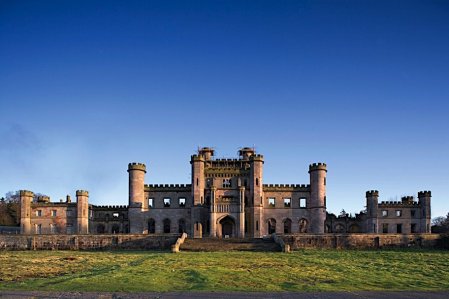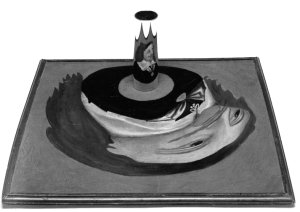The voided carcass of Lowther Castle (Sir Robert Smirke, 1806-14) should have been difficult to love. Ill-proportioned tower and corpulent wings, a chimaera of castellated Neo-Gothic and English Perpendicular awkwardly applied to a classical plan. Her eastern extremity collides with the enormous stables, engulfing the pedimented façade of the fine C17 palace that preceded her. Cumbersome, inflated, she endures as a relic of an era of unprecedented opulence. A youngster among ruins, her insides and roof were stripped in 1956 and, until the Lowther Estate and English Heritage commenced repairs almost ten years ago, she had slowly but surely decayed.
However, it is hard to imagine the landscape without her. She is both the boundary of the park and the gateway to the gardens, at once dissociating and connecting. The vast scale of the setting necessitates her intransigent bulk. An anti-romantic ruin? From her tower a totalising view, the rationalised rectification of our anamorphic experience of the tangled expanse of overgrown C16 gardens.
An old lady with perfect skin. Her divulgence has been gradual, shy, as we carefully pin and stitch her ragged walls, tease out tree roots and ease her iron cramps. Her decay is arrested at a moment in time, an arbitrary pause in the inevitable process of her incremental divestment. After half a century of solitude she is now explored, admired, examined, but she poses as many questions of us as we do her. Perhaps she was more living without us, unsupervised, dangerous. But weather already blunts the newness of our interventions. Nature recolonises. Jackdaws have returned to rattle in her empty turrets and come the summer she will surrender to willow herb.



